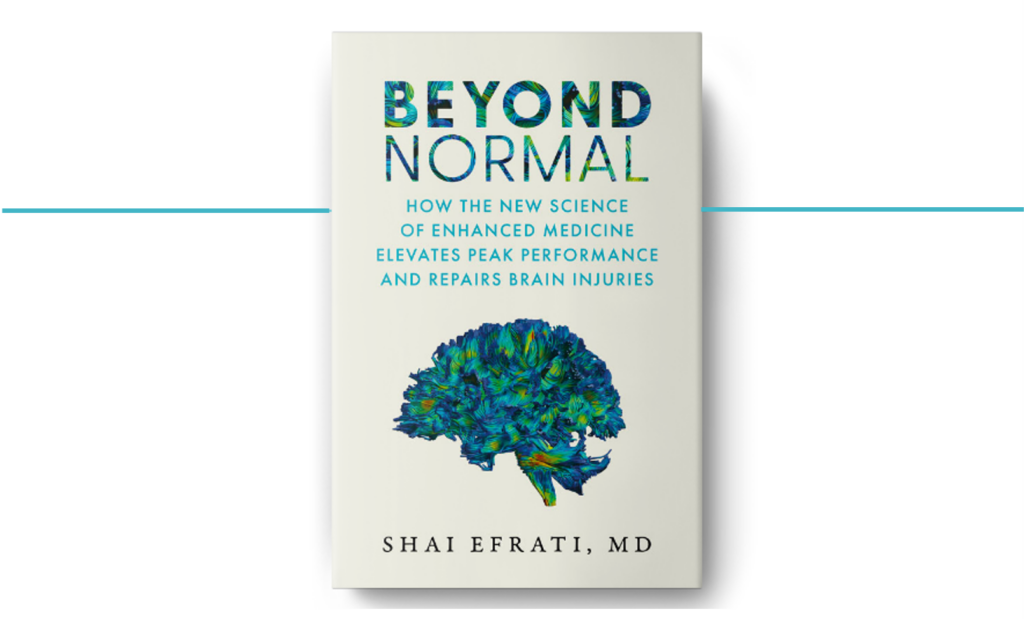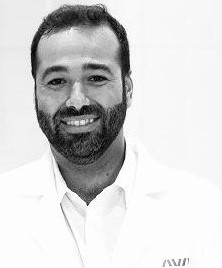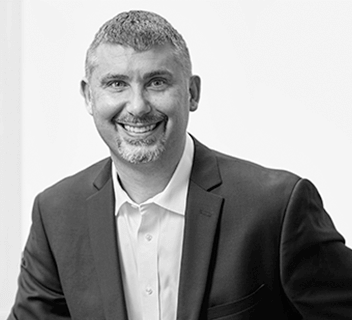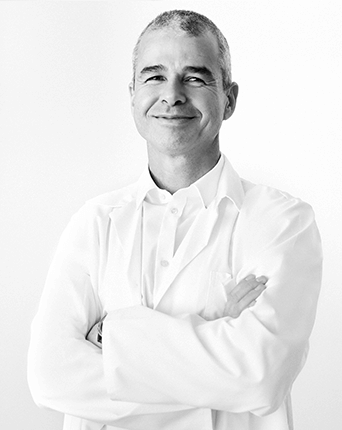
How Enhanced Medicine Is Maximizing Health Outcomes for People
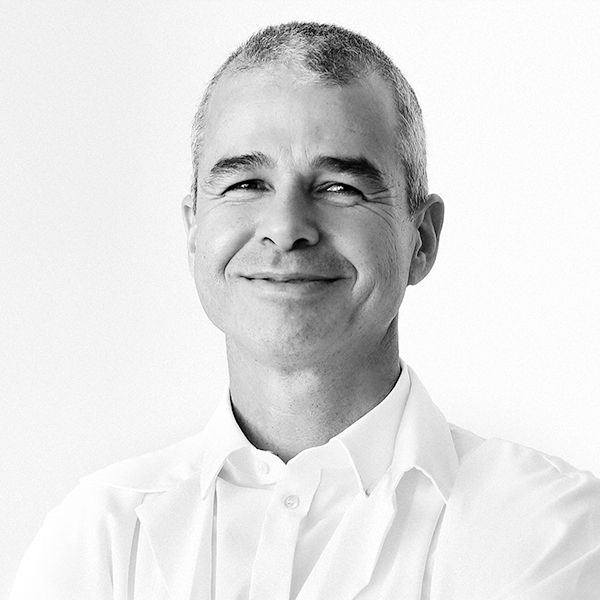

In my years of experience as a physician, I was trained — like all physicians — to consider “normal” as a target health outcome for treating patients. Doctors typically try to help patients who are ill or injured to regain the health status of “normal,” or average condition for the patient’s age and sex.
But what if the medical profession could do so much better than that? Instead of viewing “normal” as the desired outcome, physicians can aim higher, for maximazing health outcomes. We can help our patients’ biology and minds achieve the best of their potential.
Whether you’re already surpassing the “normal for age” and seeking to push your capabilities even further, or you’re well below that benchmark and aiming for even the smallest improvements, the pursuit of maximizing your biology and mind’s potential is both a worthy and achievable endeavor.

Improving Health Outcomes Through Enhanced Medicine
Based on years of research and clinical experience, my colleagues and I have developed a new model for how to administer healthcare. We call it “enhanced medicine.”
Instead of treating injuries or helping patients recover from illness to get “back to normal,” enhanced medicine can go further — and help people reach higher levels of performance and discover their untapped potential.
In this approach, we don’t focus on targeting a specific protein, enzyme, or receptor. Instead, we aim to initiate a biological cascade that promotes regeneration, repair, or buildup, ultimately leading to improved functionality and better health outcomes for patients at any age.
Let’s explore six core disciplines of enhanced medicine and see why this new model of healthcare can make such a powerful difference in people’s lives.
1. Hormesis (Safe, Controlled Exposure to Stress)
Hormesis is a concept of enhanced medicine in which we try to deliberately create low “doses” of stress in the patient’s body in a safe, controlled way. Instead of being damaged by this stress, the patient’s body gets triggered to function better, to reach a biological goal, to enhance the body’s performance.
A few examples of hormesis that you might be familiar with from your own life include:
- Interval training: The interval can be day of training and day of recovering, or it can be referred to fast runs of up to 100 yards at near-maximum speed, often referred to as sprints or strides, serve as a form of controlled stress on the body. The intense physical exertion during these bursts, or training days, not only conditions your muscles, bones, and ligaments but also prepares your entire body – heart, lungs, liver, kidneys, and digestive system – to adapt and meet the demands of future physical challenges. It’s a full-body response, beyond just strengthening your lower limbs.
- Vaccination vs. antibiotics: When administering antibiotics, we target a specific enzyme or protein in the bacteria. In contrast, vaccination introduces a small, weakened dose of bacteria or virus, creating temporary stress that stimulates the immune system. This controlled stress exposure prepares the body to effectively combat future infections by priming it for a stronger defense.
Inducing stress in the body can help prepare the person for bigger physical challenges and positive biological change.
2. Physical Exercise
The health benefits of exercise are well-known and frequently proclaimed by physicians. Enhanced medicine strongly focuses on using physical exercise and fine-tuning physical exertion with recovery periods. Along with physical health benefits like increased muscle strength and cardiovascular health, enhanced medicine also uses physical exercise to drive lesser-known benefits.

Here are a few benefits of exercise for cognitive function and mental health that are at the center of enhanced medicine:
- Stress reduction and resilience: Exercise may directly affect areas of the brain that are rich in receptors for endocannabinoids (the same chemical compounds found in cannabis). This side effect of exercise can help people regulate responses to stress and feel more resilient.
- Mental health and optimism: As part of this connection to endocannabinoids, exercise produces “don’t worry, be happy” chemicals in the brain, such as dopamine, that can help people feel more content and optimistic.
- Better brain function: Exercise releases mediators that triggers brain regeneration. As for example the hormone osteocalcin is being released from the bones into the bloodstream. This hormone helps improve memory and brain function — exercise doesn’t just tone your body; it can help sharpen your mind.
Of course, the main drawback of exercise is that it demands effort, time, and sweat it is not just a pill to be taken. However, like most worthwhile endeavors in life, nothing comes for free, and in this case, the rewards far outweigh the effort.
3. Nutrition, Diet and Fasting
The food we eat has a profound impact on the performance of every cell in our body. For example, our mitochondria, the cellular engines that convert nutrients and oxygen into energy, rely heavily on the quality of the ingredients we consume.

If those ingredients are subpar, the mitochondria will malfunction, much like a car engine running on low-quality fuel.
The Power of Timing
Beyond what we eat, when we eat is equally important. Fasting for limited periods isn’t harmful; in fact, it can be beneficial. Our bodies weren’t designed for constant access to food. Historically, you ate after hunting and then took time before hunting again. More people could benefit from trying intermittent fasting.
With intermittent fasting, people eat main meals within a limited time span each day and then consume no calories, no snacks nor light meals, for the rest of the day (freely drinking water). This creates a controlled “hunger stress” (a type of hormesis) that can be beneficial to the body.
Benefits of Intermittent Fasting
The hunger stress, lack of outside flow of calories, from intermittent fasting can help the body in multiple ways:
- The garbage that accumulate inside our cells is forced to be use as fuel. It cleans out the garbage inside our cells via a natural process called “autophagy,” or “self-eating,” where the cells utilize the “garbage” that accumulated within them to generate energy
- Makes the body better at synthesizing new molecules
- Improves cell metabolism efficiency
- Optimizes conversion of oxygen to energy
I personally use intermittent fasting in my everyday life. My food routine is to eat all my daily food within an eight-hour time window per day and fast for the other 16 hours. A little bit of hunger and the safe, beneficial stress it provides goes a long way toward improving health outcomes and performance.
4. Immune System
Beyond just fighting off illness and infection, researchers have learned a great deal more in recent years about how important the immune system is for other purposes like fighting cancer and infectious disease or preventing age-related decline. Promoting immune system resilience is not just about illness. Boosting the immune system can help enhance the body and mind for specific biological goals.
For example, some research from Prof. Michal Schwartz suggests that immune therapies in mice can help eliminate brain plaques associated with Alzheimer’s disease.
What if the immune system can help improve cognitive function? The immune system appears to have a fundamental role in supporting the brain’s ability to grow and restructure its neural networks, even as people age into their later years.
5. Hyperbaric Oxygen Therapy (HBOT) and the Hyperoxic-Hypoxic Paradox (HHP)
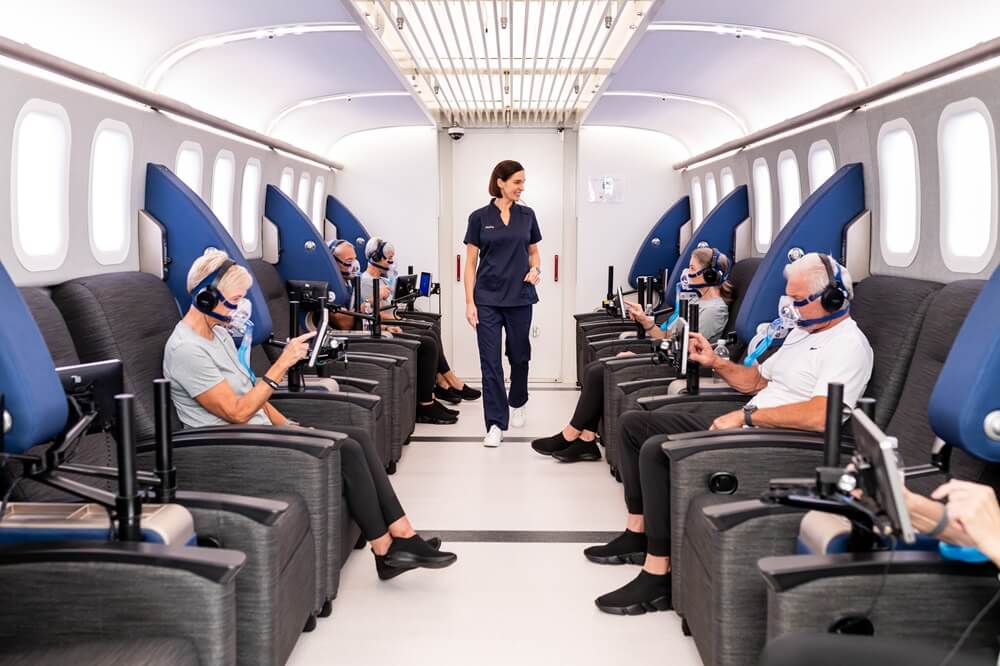
Hyperbaric oxygen therapy (HBOT) is a well-established treatment used for recovery from various illnesses and injuries, such as burns and non-healing wounds.
However, through a specially designed protocol, my colleagues and I have discovered new ways to utilize HBOT to achieve significant improvements in a variety of conditions. The newly developed HBOT protocol used in enhanced medicine activates the biological repair mechanisms typically seen during hypoxia (a lack of oxygen) but without the harmful effects of actual oxygen deprivation. We call this the “hyperoxic-hypoxic paradox” (HHP).
The Science Behind HBOT
Here’s how the HHP protocol works:
- We create fluctuations in oxygen levels in a controlled environment, using a hyperbaric chamber where both pressure and oxygen concentration are carefully controlled.
- Initially, the chamber’s pressure is compressed to 2 ATA (atmospheres absolute) with air while the patient breathes 100% oxygen through a mask.
- This significantly raises blood oxygenation from approximately 100 mmHg to around 1500 mmHg.
At this elevated level, the dissolved oxygen in the blood is sufficient to meet energy demands, enabling oxygen to diffuse even into areas where red blood cells cannot reach.
Following a predefined protocol, patients intermittently remove and replace their oxygen masks while inside the chamber. Additionally, the daily gap between hyperbaric sessions introduces a transition from the hyperoxic state back to normal oxygen levels.
These controlled fluctuations generate a response in the body that mimics hypoxia, or oxygen deprivation, without actual oxygen deficiency. The body is temporarily “tricked” into believing it is experiencing low oxygen levels, activating adaptive responses.
One key response is the activation of hypoxia-inducible factor (HIF), a transcription factor that, once triggered, stimulates the expression of numerous genes, leading to the production of proteins and initiating a cascade of cellular events that promote repair and regeneration.
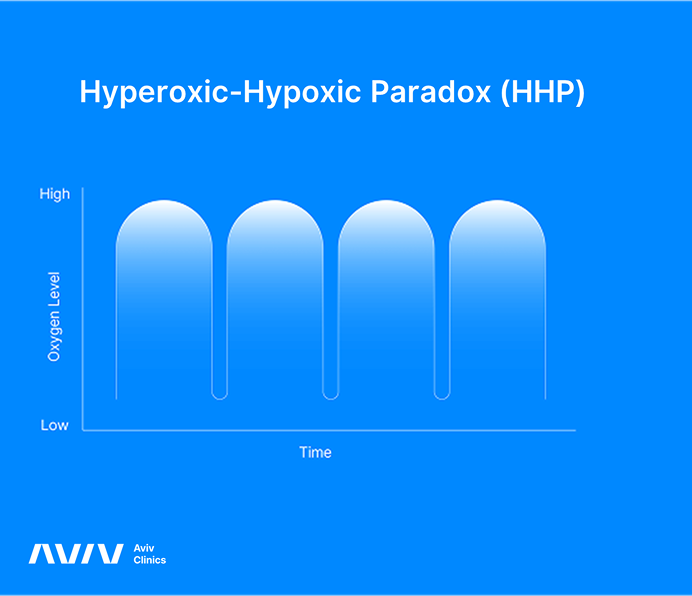
Mechanisms and Benefits
Here are a few examples of the biological mechanisms triggered by HHP, which are critical in enhanced medicine:
- Accelerated production and migration of stem cells, including neuronal stem cells
- Stimulation of angiogenesis (the formation of new blood vessels) to improve tissue perfusion
- Increased the numbers of mitochondria (the powerhouses of the cell)
- Enhanced efficiency of mitochondria in converting oxygen and glucose into energy
- Reduced inflammation
At the biochemical and cellular levels, enhanced medicine helps shift the body from a state of degeneration to one of regeneration.
Our research shows that stimulating new blood flow, mobilizing stem cells, and improving mitochondrial function can lead to dramatic improvements in patients suffering from a wide range of chronic, non-healing conditions, including stroke, traumatic brain injuries – concussion, fibromyalgia, PTSD, and long COVID.
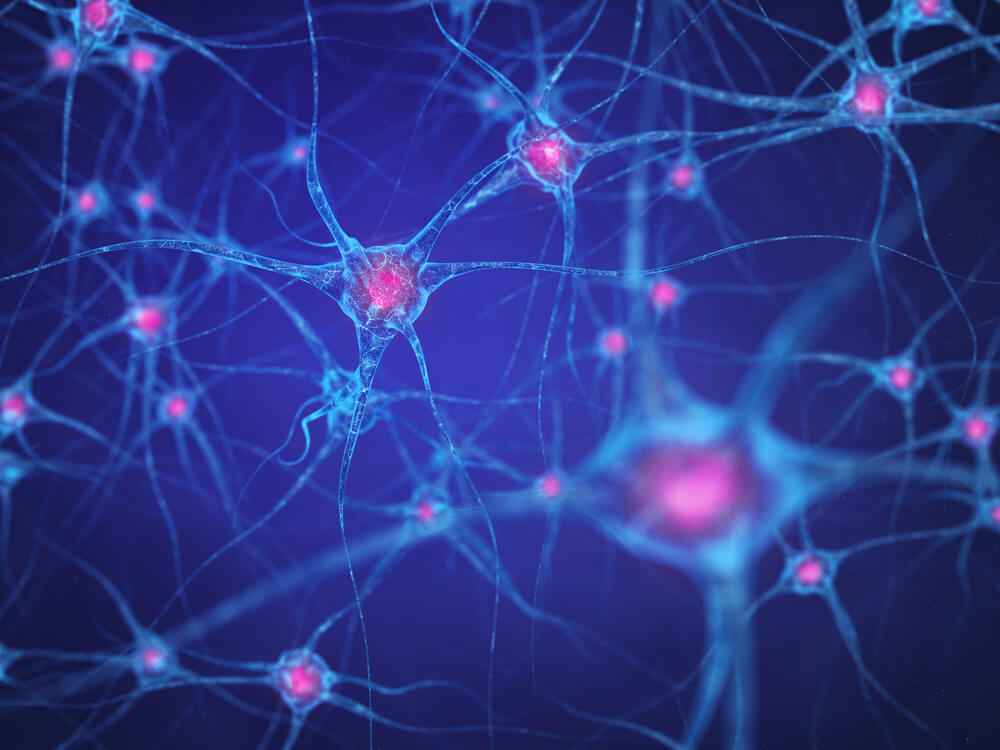
6. Mental Perception and Resilience
Mental health is deeply connected to physical health, they are interwoven, influencing one another. Conditions like depression, a lack of purpose, and a diminished sense of being needed can profoundly affect a person’s biological functions and their ability to regenerate.
As Nietzsche once said, “He who has a why to live can bear almost any how.” Without a clear sense of purpose or future goals, our biology may not fully engage in helping us reach that future. That’s why it’s essential to find your personal “why” and have a plan for your future.

I often tell my patients, “Make yourself NEEDED.” When they ask, “How do I know if I’m truly needed?” I explain: If you decide to stay home one day and someone calls you saying, “Hey, where are you? We need you, we’re waiting for you,” then you know you’re needed.
Severe mental health conditions like PTSD are not just psychological; they are biological brain injuries triggered by trauma. In such cases, the biological damage must be repaired for the mind to heal, and vice versa. Enhanced medicine treatments, particularly HBOT using HHP protocols, can repair the malfunctioning brain tissue in PTSD patients, leading to a significant alleviation of symptoms.
Revolutionizing Healthcare with Enhanced Medicine
Enhanced medicine is about enhancing people’s physiology and biology to the highest levels possible, not just what is “normal” for that person’s age.
Just within the past few years, researchers have made exciting discoveries about how to build resilience at the biochemical level. Vigorous exercise can stimulate beneficial chemical changes in the brain. Intermittent fasting can inspire the body to feel “hungry” in a way that makes it work a little harder to clean out junk from its cells.
And simulating a sense of oxygen deprivation (paired with high levels of oxygen in a hyperbaric chamber) can drive the human body (and brain) to create beneficial new blood flows and stem cells, improve metabolism, and enhance mitochondrial function.
By slightly, carefully, safely “stressing” the body with enhanced medicine, we can drive new growth and benefits — beyond “normal,” to achieve inspiring new levels of healing, health, and human performance.
The innovative programs at Aviv Clinics are designed to maximize these benefits, focusing on everything from anti-aging and longevity to cognitive performance and brain injury recovery.
The Future of Enhanced Medicine to Improve Health Outcomes
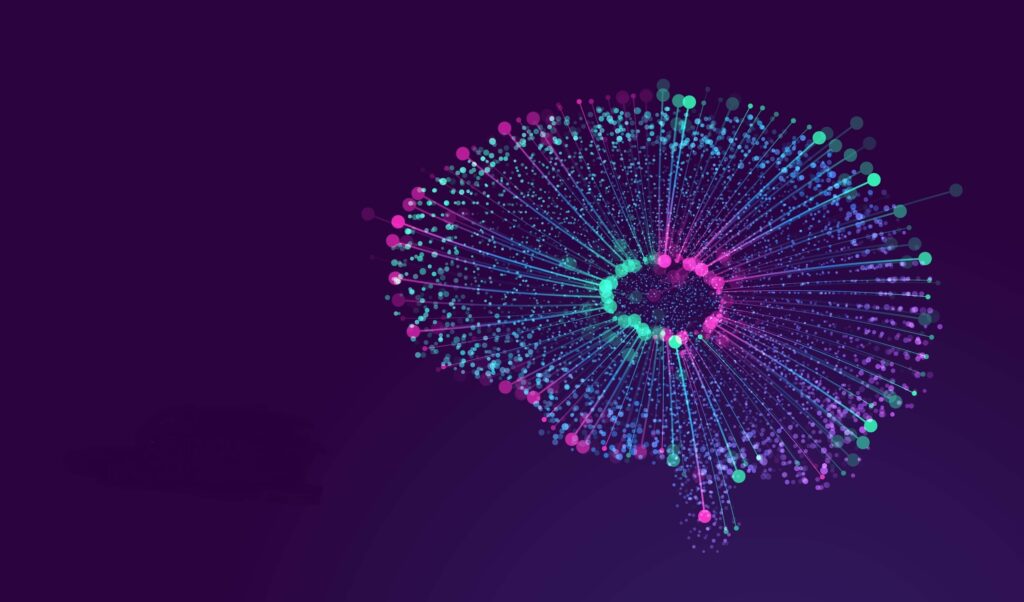
The enhanced medicine approach represents a paradigm shift in healthcare, moving beyond treating illness to optimizing human potential.
By integrating these six disciplines, we can achieve better health outcomes than we previously thought possible. This approach enhances both the quality and quantity of our time, it not only adds years to our lives but also adds life to our years.
Our team of experts will continue to pioneer these treatments to make them accessible to patients who want to surpass the limitations of traditional medicine. From injury recovery to optimizing performance, enhanced medicine paves the way for you to achieve your highest potential.
Want to see more specific examples and clinical details of how enhanced medicine and hyperbaric oxygen therapy with the hyperoxic-hypoxic paradox can create significant improvements in human health outcomes?
Learn more in my new book – “Beyond Normal: How the New Science of Enhanced Medicine Elevates Peak Performance and Repairs Brain Injuries.” Find it on Amazon and Barnes & Noble, or visit my website for more information.
